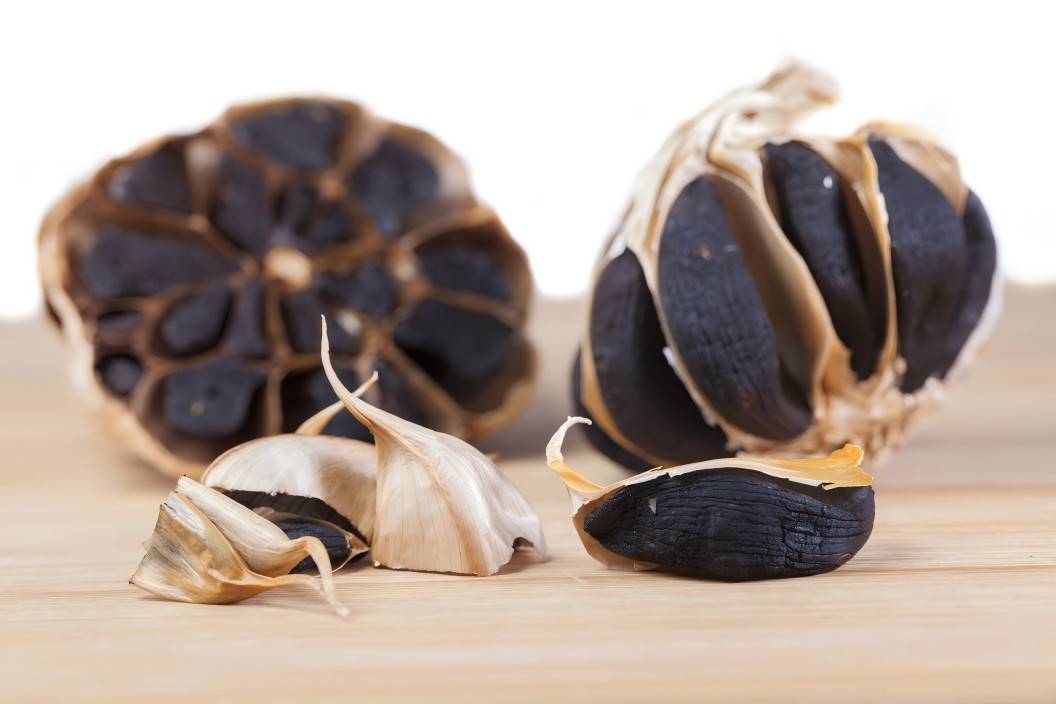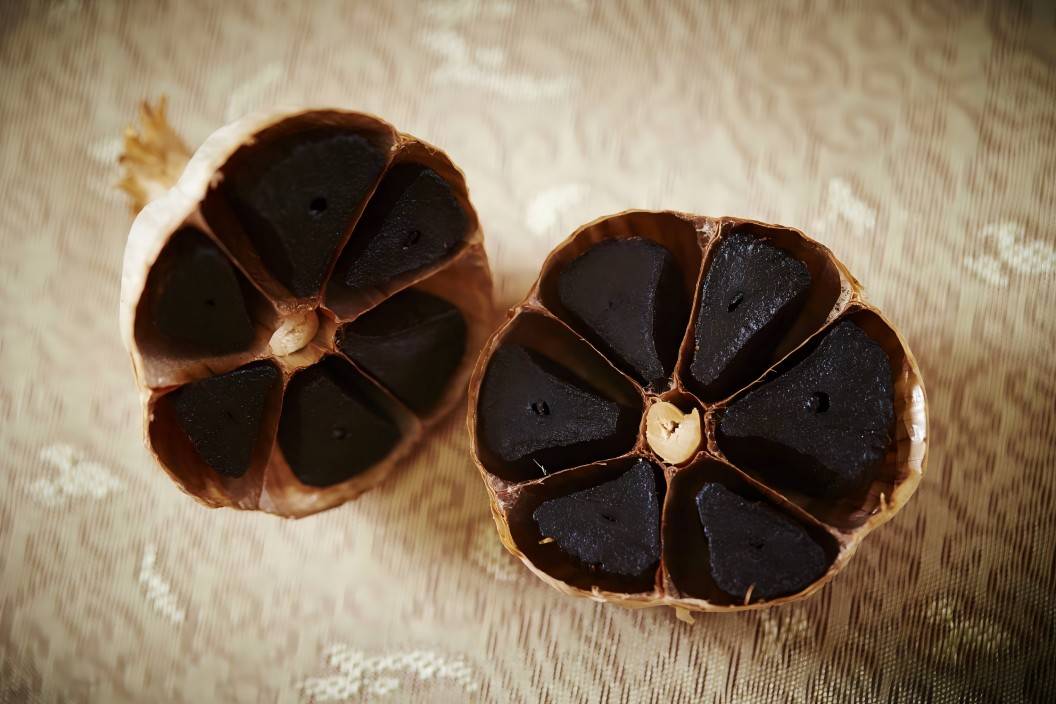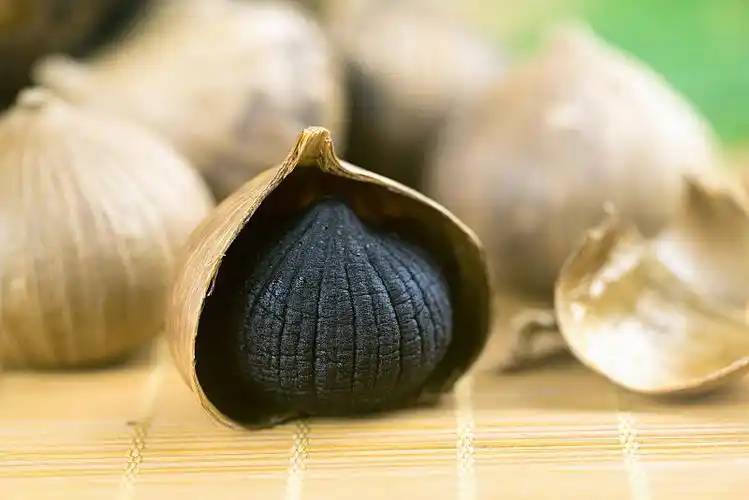What Is the Black Garlic Making Process?
Garlic has a long history of cultivation in China. As a traditional agricultural product and seasoning, it is popular for its unique flavor and good health benefits. After a period of fermentation, a series of physical and chemical reactions occur inside the cells of fresh garlic, and the garlic body changes from milky white to blackish purple. Therefore, fermented garlic is called black garlic, also known as black garlic. Black garlic has extremely high nutritional value, with a significantly lower moisture and fat content, but a significantly higher content of trace elements such as potassium, calcium, iron and zinc. In addition, the content of substances such as protein, sugar, vitamins and phenols has increased to more than three times the level before fermentation [1]. Fermented black garlic has attracted increasing attention due to its good taste, non-irritating spicy flavour, richer nutrients and higher physiological activity. The author summarizes the preparation process, nutritional composition and health benefits of black garlic, with the aim of providing a theoretical reference for the further processing of black garlic.
1 Preparation process of black garlic
At present, there are two main types of black garlic preparation processes: fermentation and non-fermentation. Among them, the black garlic prepared by the fermentation method is currently the main black garlic production method in China. The preparation method of fermented black garlic is divided into two methods: solid-state fermentation and liquid fermentation. Fermented black garlic is not directly fermented by microorganisms, but rather fresh garlic is subjected to high temperatures and high humidity in an environment where its own tissues are destroyed, resulting in a series of enzymatic browning and non-enzymatic browning. These carbonyl reactions, combined with the effects of Maillard and other reactions, produce black polysaccharides (pseudomelanin) [2], which give black garlic its unique appearance.
1.1 Solid-state fermented black garlic
Solid-state fermentation is currently the most common method of fermentation. Solid-state fermentation of black garlic refers to a fermentation process in which the garlic itself is fermented in the absence or almost absence of free water. The process is as follows: select whole, fresh, plump garlic → peel, remove 1–2 layers of the stem → rinse clean → ferment in a high-temperature, high-humidity environment → the garlic turns black and its pungent smell disappears → black garlic [3]. In the process of solid-state fermentation, pretreatment and high-temperature, high-humidity fermentation conditions are the two key steps.
Zhong Cheng et al. [4] used ultra-high pressure pretreatment to prepare black garlic. The results showed that ultra-high pressure pretreatment had a significant effect on the nutrient content of fermented black garlic. The total sugar content decreased after ultra-high pressure treatment; when the holding pressure was 15 min, the total phenol content of black garlic reached 3. 20 mg/g; the flavonoid content of black garlic treated with ultra-high pressure is higher than that of unfermented white garlic, but the flavonoid content of black garlic not pretreated with ultra-high pressure is the highest, at 5.23 mg/g.
In addition, the antioxidant capacity of black garlic pretreated by ultra-high pressure was also significantly improved. Liu Wenhong et al. [5] fermented black garlic using microwave pretreatment and low-temperature treatment. By accelerating the lysis of garlic cells and promoting the release of enzymes in cells, black garlic was formed, shortening the fermentation process and accelerating the fermentation cycle. Wang Haisu et al. [6] used - 18 ℃ low-temperature freezing pretreatment combined with variable temperature fermentation to ferment black garlic. The results showed that the fermentation period of black garlic fermented by combining freezing pretreatment was shortened from the original 60-90 d to 15 d, and the sensory and nutritional qualities were superior to those of traditionally fermented black garlic. The contents of reducing sugars, total phenols, and free amino acids [7] were significantly improved.
The high-temperature, high-humidity fermentation environment is a prerequisite for a series of physical and chemical reactions in garlic itself. Wang et al. [8] showed that in a high-temperature, high-humidity fermentation environment, unstable bond ruptures may occur in allyl sulfide sulfur compounds, leading to the formation of alkyl sulfide and propylene radicals, thereby eliminating the pungent odor of fermented garlic and improving the aroma. Kimura et al. [9] reported that high temperatures can shorten the fermentation period of black garlic. Fermentation at 70 °C can even double the rate of fermentation compared to 60 °C. The researchers further stated that the color of the product obtained by fermenting garlic at 60 °C is not dark enough to form black garlic. In addition, although a temperature of 90 °C can speed up the fermentation process, it can also give the product an acidic and bitter taste, which has a negative impact on the taste. Therefore, the optimum fermentation temperature for garlic is 70-80 °C. Compared with the constant temperature and humidity fermentation conditions, at present, domestic black garlic production mostly uses the variable temperature fermentation method. Liu Shuanglei et al. [10] invented a variable temperature fermentation method, which greatly reduces the fermentation time, saves costs, and reduces energy consumption. However, due to the differences in size and moisture content between garlic bodies, this variable temperature fermentation method requires the operation of specialized technical personnel.
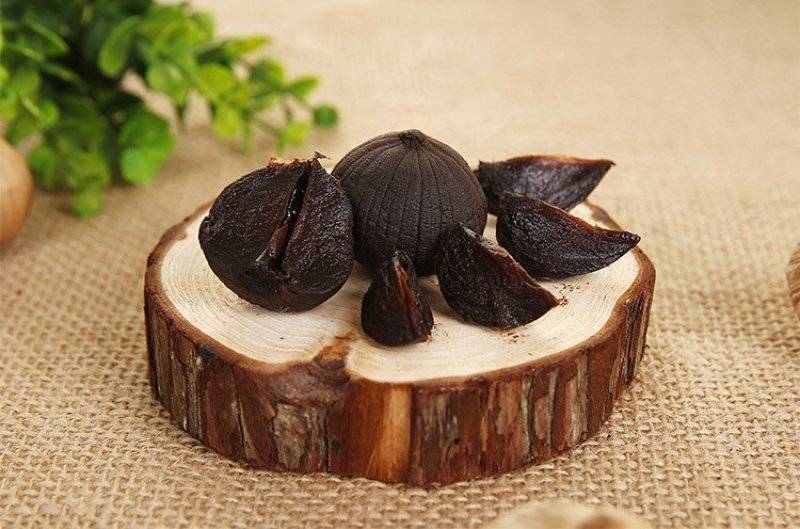
1.2 Liquid fermentation of black garlic
Liquid fermentation refers to a fermentation method in which the garlic is crushed before fermentation to produce a garlic paste, some water is added as a fermentation substrate, and then the mixture is sealed for fermentation. The main process includes: selecting whole, fresh, plump garlic → peeling, removing 1 to 2 layers of the stalk → rinsing with clean water → crushing the cloves → adding water → vacuum sealing in a bag → fermenting in the fermentation box → draining until 50% of the water is left → finished black garlic.
In the process of liquid fermentation of black garlic, the crushing of the garlic cloves into a paste has the same trend of influence on the total phenol and amino nitrogen content of the black garlic after fermentation. As the crushing time increases, the particle size of the garlic paste decreases, and the contact area increases, which allows a more complete series of physicochemical reactions such as Maillard to take place, causing the total phenol and amino nitrogen content to increase after fermentation. When a peak is reached, the extended crushing time may cause some of the garlic paste to oxidize, which in turn causes the total phenol and amino nitrogen content to decrease again [11]. During the bagging and vacuum sealing process, the sealed bag can effectively prevent the diffusion of pungent odor sulfides, but it must be heat-resistant. In addition, during the fermentation process in the fermentation box, the variable temperature fermentation environment can not only shorten the fermentation cycle, but also increase the content of related active substances.
Chen Hao et al. [11] studied the effects of different liquid-to-garlic ratios, mashing times, freezing temperatures and fermentation times on the fermentation quality of black garlic. The optimal process for liquid-fermented black garlic was finally determined to be a liquid-to-garlic ratio of 5:3, a mashing time of 15 min, a freezing temperature of -20 °C, fermentation time of the first stage was 80 ℃ and 8 d, and the second stage was 75 ℃ and 10 d. This process has good stability and a good sensory evaluation. In the process of fermenting purple-skinned garlic to make black garlic, Luo Cangxue et al. [12] showed that the same method of variable temperature fermentation was also used, the liquid-to-solid ratio was 2:1, and the optimal liquid fermentation process was achieved when the particle size was broken to 4 mm. The product was a uniform dark brown color, without an acidic odor, and the total phenol content increased by 5 times, and the superoxide dismutase (SOD) activity increased by 15 times.
1.3 Non-fermented black garlic
Unlike the processes for solid-state and liquid-state fermented black garlic, non-fermented black garlic has the advantages of lower processing costs, shorter processing time and simpler processing technology. In addition, the processing technology of non-fermented black garlic greatly increases the content of active ingredients and the antioxidant activity of black garlic products. The main processing steps are as follows: select whole, fresh, plump garlic → wash clean → steam under high temperature and pressure → remove and dry → black garlic.
Zhao Yan et al. [13] showed that steaming at a high temperature of 130 °C for 1 h and drying at 80 °C for 3 h produced a non-fermented black garlic product with significantly improved color, dryness, texture and smell compared to fermented black garlic. In addition, the non-fermented black garlic significantly increased the amino acid content. At the same time, the total phenol content increased significantly. In terms of its ability to scavenge free radicals, non-fermented black garlic has a DPPH free radical scavenging rate of 92.80%, which is three times that of ordinary garlic and much higher than the DPPH free radical scavenging rate of fermented black garlic, which is 52.30%.
2 Nutritional composition of black garlic
Black garlic is rich in nutrients, including mainly sugars, proteins, fats, crude fiber, B vitamins, amino acids, trace elements, etc. Wang Yu et al. [14] found that the nutritional composition of black garlic varies depending on the production process and raw material variety, but the overall nutritional value of black garlic is significantly higher than that of fresh garlic [13, 15–20].
Wu Qingmei et al. [21] studied two black garlic products made with different fermentation times and compared the compositional changes of black garlic products fermented for 90 and 30 d, respectively. The results showed that the moisture content of black garlic decreased significantly, which was mainly due to the Maillard reaction, which caused the evaporation of moisture and at the same time formed the soft and sticky flavor and texture of black garlic.
As nutrients, sugars and proteins, on the one hand, provide the body with energy as indispensable energy substances, and on the other hand, the amino acids in proteins can supplement the amino acids needed by the body. It has been reported[22] that the soluble sugar and crude protein content of black garlic increases slightly. The Maillard reaction continuously consumes proteins with amino structures and carboxylated saccharides, while the reduction of moisture and the hydrolysis of macromolecular substances such as starch greatly increase the ratio of wet protein, amino acids and soluble sugars, ultimately making the content higher than that of fresh garlic.
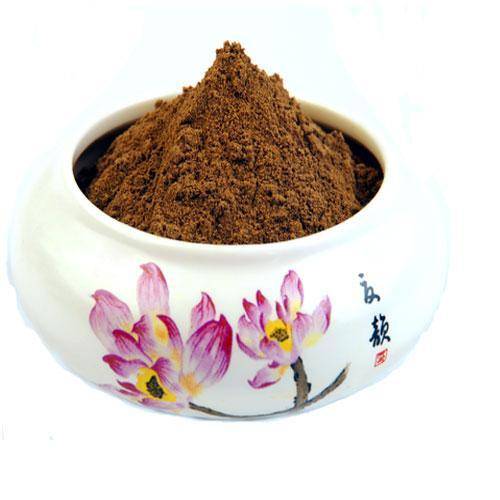
Phenolic substances are one of the important functional components in black garlic, and the total phenolic content largely reflects the functional role of black garlic [23]. Compared with fresh garlic, the polyphenol content of black garlic has increased exponentially. This is because during the heat fermentation process, the macromolecular substances in fresh garlic are continuously broken down into small molecular substances, which releases more phenolic hydroxyl groups and thus increases the polyphenol content. In addition, the polyphenol content of black garlic varies significantly in black garlic products fermented for different lengths of time, mainly because as the fermentation time increases, the macromolecular substances are fully hydrolyzed, thereby further increasing the polyphenol content.
The amino acid content of black garlic differs significantly from that of fresh garlic. Glutamic acid and aspartic acid are the two amino acids most abundant in black garlic, while arginine, glutamic acid and proline are most abundant in fresh garlic [6, 18]. Lysine and arginine are both basic amino acids that contribute to the Maillard reaction, so their content has decreased significantly. In addition, some minor amino acids such as glycine and leucine in black garlic are slightly increased compared to fresh garlic. Wu Qingmei et al. [21] found that after 90 days of fermentation, the amino acid content of black garlic was similar to that of black garlic fermented for 30 days, with the exception of threonine, arginine, and proline. Phenylalanine, leucine, and valine were found to be higher in black garlic fermented for 30 days.
Luo Haiqing et al. [24] measured the changes in the basic components of fermented black garlic and found that the fat content in black garlic is reduced, and the protein is broken down into polypeptides, which enriches its nutritional value. In addition, the volatile sulfur-containing compounds are greatly reduced, and the irritating allicin sulfur-containing compounds are converted into stable sulfur-containing compounds, which not only makes the original pungent garlic smell of garlic disappear, but also gives black garlic a light fragrance and a soft and sweet taste.
Wang Xibo et al. [25] found that the total phenol content, moisture content, total acidity and reducing sugar content of non-fermented black garlic prepared under the conditions of 127 ℃, 70 min steaming time and 95 ℃ roasting for 6.5 h reached 1.12 g, 27.41%, 7.87 g and 3.61 g per 100 g of black garlic, respectively. It is not difficult to see that the non-fermented black garlic prepared by the non-fermented process 12 g, moisture content 27.41%, reducing sugar content 7.87 g, and total acid content 3.61 g. It is not difficult to see that the total phenol content of non-fermented black garlic is significantly higher than that of fresh garlic, while the reducing sugar and moisture contents are significantly lower, and the total acid content shows a slight increase. Comparing the studies on the composition of fermented black garlic by Wu et al. [21] and Anton et al. [26], it is found that the total phenol content of non-fermented black garlic is higher, and the reducing sugar content also shows a significant increase, but the moisture content is about 50% lower than that of fermented black garlic.
3 Health benefits of black garlic
Garlic is warm in nature and pungent in taste. It nourishes the spleen and stomach, warms the middle Jiao to relieve stagnation, detoxifies, and kills parasites. It is praised as a “natural antibiotic” and is a dual-purpose medicinal and edible plant with excellent health benefits. Compared to garlic, black garlic has more active ingredients and better antioxidant, anti-cancer, anti-bacterial, anti-inflammatory, and liver-protecting effects. Currently, the physiological functions of black garlic mainly include the following aspects.
3.1 Antioxidant and anti-aging
Black garlic has strong antioxidant and anti-aging abilities. The increase in the content of polyphenols in black garlic plays an important role in its antioxidant properties. Plant polyphenols, also known as tannins, are a general term for polyhydroxyphenolic compounds. They have the ability to remove free radicals, regulate immunity, inhibit the growth of tumor cells, and inhibit the activity of different enzymes [27]. Wang Yurong et al. [28] used the Folin-Ciocalteu colorimetric method to determine the polyphenol content in black garlic. The results showed that the polyphenol content of fermented black garlic increased significantly from 1.66 mg/g in fresh garlic to 6.81 mg/g. Therefore, black garlic has a stronger free radical scavenging ability than fresh garlic. In addition, black garlic is rich in 5-hydroxymethyl furfural (5-HMF), which has certain antioxidant effects. Song Yurong et al. [29] studied the ability of 5-HMF to scavenge free radicals in vitro and in vivo, as well as its effect on the antioxidant capacity of mice fed a high-fat diet to induce oxidative stress. The results showed that 5-HMF has a enhancing effect on the ability of oligosaccharide sucrose to scavenge free radicals and has a certain enhancing effect on the antioxidant capacity of the mouse liver. Ichikawa et al. [30] found that β-carboline alkaloids have strong hydrogen peroxide scavenging capacity, while garlic has a significant increase in 1-methyl-1,2,3, 4 - 4H - β- carboline derivatives (THβCs) content increased significantly. Zhu Bingqiao et al. [31] found that the activity of antioxidant enzymes in black garlic tissue has also been improved. Lee et al. [32] confirmed that black garlic has anti-aging functions, and the activities of SOD, glutathione peroxidase (GSH-Px), and catalase (CAT) are all improved.
3.2 Anti-cancer and anti-tumor
In medicine, cancer refers to malignant tumors that originate from epithelial tissue, and is the most common type of malignant tumor. The term “cancer” generally refers to all malignant tumors. Cancer is characterized by the unlimited proliferation and spread of cancer cells, which eventually invade various parts of the body, causing a series of complications.
Black garlic contains germanium and selenium, which can inhibit the growth of cancer. Chen Chunying et al. [33] studied the anticancer effects of sodium selenite and carbyne germanium sesquioxide using a mouse model of transplanted Ehrlich ascites carcinoma. The study showed that selenium and germanium both have significant anticancer effects, and there is a synergistic effect between the two. Wang Yishan et al. [34–36] studied the effect of black garlic extract combined with radiotherapy on the growth of H22 mouse transplant tumors and found that black garlic extract inhibited tumor growth by up to 66.93%, and could induce apoptosis of H22 cancer cells, with an apoptosis rate of about 55%. In addition, they found that black garlic extract has a significant inhibitory effect on the growth of the Lewis lung cancer cell line, and that black garlic extract combined with γ-ray irradiation has an inhibitory effect on the growth of Ht-29 colon cancer mouse tumors, delaying tumor growth.
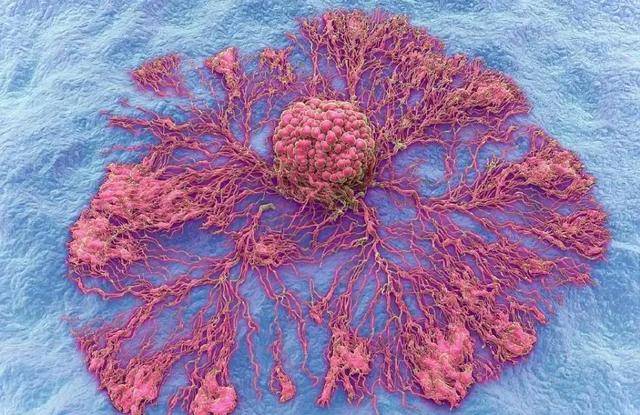
3.3 Laxative
Laxatives are a way to treat constipation caused by old age, blood deficiency after childbirth, heat illness and blood loss. According to Zhang Min et al. [37], who studied the composition and laxative effect of garlic polysaccharide extract, garlic polysaccharide extract has a laxative effect on mice with constipation. Garlic polysaccharides belong to the fructans of the inulin family and are activators of bifidobacteria in the intestine. They can be used by bifidobacteria to promote intestinal peristalsis. In black garlic, the fructans are degraded to fructooligosaccharides, which not only increase the sweetness but also have a good laxative effect.
3.4 Boosts immunity
Immunity is the body's own defence mechanism, which can identify and destroy foreign invaders, remove senescent, damaged, dead, and degenerated cells, as well as identify and deal with mutated cells and virus-infected cells in the body.
The liposoluble volatile oil in black garlic, such as allicin, can significantly enhance the phagocytic ability of macrophages in the body and strengthen the immune system. Liu et al. [38] found that garlic oil has a dual effect on the Th1-Th2 cell balance. A low dose can enhance the Th1-type cellular immune response, while a high dose of garlic oil is more beneficial for Th2. Black garlic extract also has a promoting effect on the cellular immune response in mice. Feng Yonghui et al. [39] studied the effect of black garlic extract on the cellular immune function of BALB/c mice. The results showed that black garlic extract can significantly enhance the killing activity of natural killer (NK) cells and promote the secretion of the non-specific immune molecules nitric oxide (NO) and Th1 cytokines IL-2, IFN-γ and TNF-α. In addition, the amino acids serine and lysine, vitamin C and trace element zinc, which are required for hormone synthesis, also play a role in boosting immunity.
3.5 Protecting the liver
The liver is not only the largest digestive organ in the body, it is also an important detoxification organ. Traditional Chinese medicine believes that the liver governs the face, and that if the liver's qi is unblocked, the complexion will be rosy and the spirit clear. If the liver is overloaded for a long time and too many toxins cannot be excreted in time, the skin will reflect this in the form of dullness and pigmentation.
According to Lei Fengchao et al. [1], the methionine in black garlic has the function of preventing and treating acute and chronic hepatitis, cirrhosis and other liver diseases. Some branched-chain amino acids such as valine can also significantly improve liver failure. Alanine and asparagine can also play a certain role in improving and protecting liver function. Jung et al. [40] induced obesity in mice by feeding them a high-fat diet. The 91-day-old mice showed obvious obesity, hyperglycemia and hypertension, and both the liver and kidneys were damaged to varying degrees. The effect of fermented black garlic on obese mice was investigated, and it was found to have obvious effects of protecting the liver and kidneys, lowering blood lipids, and losing weight.
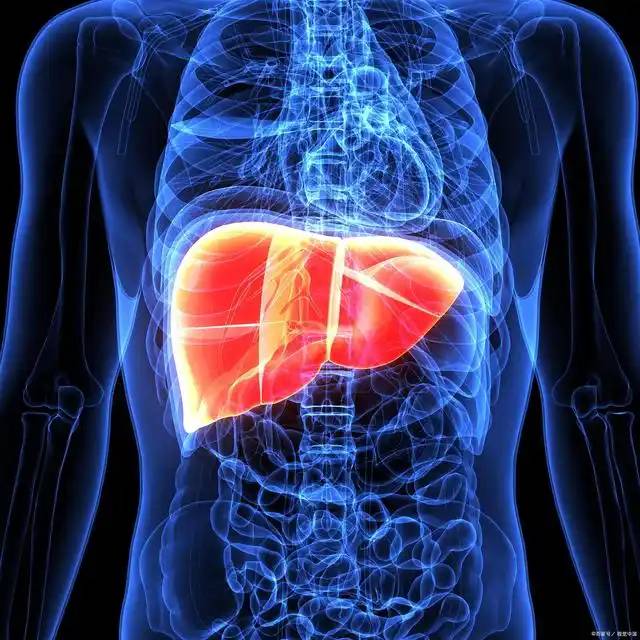
3.6 Other effects
Li Yang et al. [41] observed the therapeutic effect of black garlic extract on allergic asthma in mice and found that black garlic extract has a certain therapeutic effect on asthma. Ning Yuebao et al. [3] found that the sulfide in black garlic allicin can significantly lower blood sugar. Ried et al. [42] reported that black garlic extract does have a supplementary antihypertensive effect and is superior to antihypertensive drugs, playing a therapeutic role in hypertension and cardiovascular disease. Kim et al. [43] studied the expression changes of endothelial cell adhesion factors and monocyte adhesion in TNF-α-stimulated umbilical vein endothelial cells and the possible mechanisms of black garlic 5-HMF, confirming that 5-HMF has a significant anti-inflammatory effect.
4 Prospects
With the improvement of people's living standards, dietary habits and nutritional and health needs are undergoing major and continuous changes. Food consumption by urban and rural residents has accelerated a shift away from subsistence-oriented consumption towards nutritionally and health-oriented consumption, from “eating well” to “eating more nutritious, safer and healthier food”. As a nutritious and healthy food, black garlic is rich in nutrients and has significant health benefits. It is bound to become more popular with consumers in China and has broad market prospects.
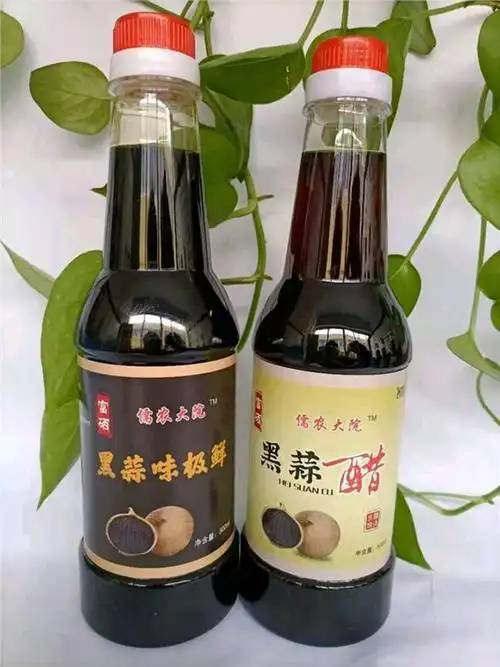
References
[1] Lei Fengchao, Hao Guo, Zhu Li, et al. Research progress on the nutritional value and health benefits of black garlic [J]. Food Industry Science and Technology, 2012, 33(13): 429-432.
[2] Luo Haiqing. Research on the nutritional composition and antioxidant activity of black garlic [D]. Yangzhou: Yangzhou University, 2016.
[3] Ning Yuebao, Wang Haiyang, Du Zhiqiang. Research on the hypoglycemic effect of black garlic products produced by solid fermentation [J]. Heilongjiang Animal Husbandry and Veterinary Medicine (Comprehensive Edition), 2015(1): 100-101.
[4] Zhong Cheng, Xu Guojuan, Wu Xiaoying, et al. Effect of holding time on some nutrients and antioxidant properties of black garlic [J]. Modern Food Science and Technology, 2014, 30(3): 49-52.
[5] Liu Wenhong, Xiang Hai, Xu Ni. A method for producing black garlic by combining microwave and fermentation: CN201210049481. 6[P]. 2012-07-18.
[6] WANG H S, WU H, YANG S L, et al. Comparative analysis of the quality of black garlic produced by different processes [J]. Modern Food Science and Technology, 2014, 30(7): 230-236.
[7] WANG J G, HU W Z, JIANG A L, et al. Research progress on the production process, nutritional composition and biological functions of black garlic [J]. Food Industry, 2015, 36(12): 232-236.
[8] WANG Y, WU W L, WANG B, et al. Component analysis of volatile oil of garlic from different districts and assay of allicin content [J]. Chinese food science, 2012, 1(1): 40-42, 50.
[9] KIMURA S, TUNG Y C, PAN M H, et al. Black garlic: A critical review of its production, bioactivity, and application [J]. Journal of food and drug analysis, 2017, 25(1): 62-70.
[10] Li Shuanglei, Wu Chengmin, Xiao Kai. Production method of black garlic: CN201510276908 X[P]. 2015-08-05.
[11] Chen Hao, Gu Haofeng. Research on the processing technology of black garlic puree [J]. Food and Fermentation Technology, 2016, 52(5): 41-45.
[12] Luo Cangxue, Su Dongxia, Chen Shuyu. Optimization of fermentation process for liquid black garlic [J]. Transactions of the Chinese Society of Agricultural Engineering, 2013, 29(18): 292-297.
[13] Zhao Yan, Zhang Xuelun, Cai Enbo, et al. A non-fermented black garlic and its preparation process: CN201410062666. X[P]. 2014-05-14.
[14] Wang Yu, Zhang Jilong, Jing Hao. Analysis of the composition of black garlic prepared by different varieties and processing techniques [J]. Journal of Food Safety and Quality Testing, 2016, 7(8): 3085-3091.
[15] WANG Y R, QU T L, GAO M, et al. Simple preparation of black garlic and determination of its antioxidant activity [J]. Food Science and Technology, 2014, 39(1): 268-271.
[16] JI Y R, SHI J, LIU Y F, et al. Analysis of changes in the main nutrients during the production of black garlic and process optimization [J]. Food Industry Science and Technology, 2015, 36(5): 360-364.
[17] KANG O J. Physicochemical characteristics of black garlic after different thermal processing steps [J]. Prev Nutr Food Sci, 2016, 21(4): 348-354.
[18] WANG W D, WANG Y, WANG C, et al. Effect of the Maillard reaction on the nutritional composition and antioxidant properties of garlic[J] . Food Science and Technology, 2013 ,38(4) :42 -44 ,48.
[19] Wang Xin, Yang Ke. Research progress on the anti-tumor effect of black garlic[J] . Practical Medicine Journal, 2011 , 28(2) : 176 -178 .
[20] Hang Dong. The miraculous “black garlic” [J]. China Food, 2012(23): 64-65.
[21] Wu Qingmei, Pan Siyi, Xu Xiaoyun. The effect of different processing techniques on the quality of black garlic products [J]. Modern Food Science and Technology, 2015, 31(2): 184-189.
[22] LU F Z, LI Q Q, QIAN F, et al. Study on the changes of reducing sugar and soluble sugar content during black garlic fermentation [J]. Food Science and Technology, 2014, 39(12): 91-93.
[23] LI N Y, LU X M, PEI H B, et al. Effect of freezing pretreatment on the processing time and quality of black garlic[J]. Journal of food process engineering, 2015, 38(4): 329-335.
[24] Luo Haiqing, Wu Lei, Zhu Cuiling, et al. Study on the changes of nutritional components and volatile flavor substances during the processing of black garlic [J]. Food Science and Technology, 2016, 41(7): 104-108.
[25] Wang Xibo, Yu Jie, Zhang Zeyu, et al. Study on the preparation process and antioxidant activity of black garlic by non-fermentation method [J]. Journal of Agricultural Machinery, 2017, 48(4): 321-326.
[26] AN Dong, LI Xinsheng, MA Chao, et al. Research progress on the composition and function of black garlic [J]. China Fruit and Vegetable, 2014, 34(10): 5-1-54.
[27] KWAK I S, KIM H J, OH S B, et al. Antioxidant activity of Maillard browning reaction products from the various sugars and amino acids model systems [J]. J Eng Res, 2005, 36: 9-15.
[28] WANG Y R, QU T L, GAO M. Simple preparation of black garlic and determination of its antioxidant activity [J]. Food Science and Technology, 2014, 39(1): 268-271.
[29] SONG Y R, LIU Y, YUE G W, et al. Study on the antioxidant capacity of oligosaccharide sucrose and 5-hydroxymethylfurfural [J]. Food Industry Science and Technology, 2010(4) :342 -345 .
[30] ICHIKAWA M, RYU K, YOSHID A J, et al. Antioxidant effects of tetra- hydro-β-carboline derivatives identified in aged garlic extract [J]. BioFactors, 2002, 16(3/4): 57-72.
[31] Zhu B Q, Wu H G, Liu Y Y, et al. Research on the antioxidant activity of black garlic [J]. Food Research and Development, 2008, 29(10): 58-60.
[32] LEE Y M, GWEON O C, SEO Y J, et al. Antioxidant effect of garlic and aged black garlic in animal model of type 2 diabetes mellitus [J]. Nutrition research and practice, 2009, 3(2): 156-161.
[33] Chen Chunyang, Huang Kaixun, Liao Baoliang, et al. Research on the anti-cancer effect and mechanism of trace elements selenium and germanium [J]. Tumour, 1993, 13(S1): 296-298.
[34] Wang Yishan, Yang Guiqing, Wang Yuanyuan, et al. Molecular mechanism of black garlic extract combined with radiotherapy to inhibit the growth of H22 mouse tumors [J]. Chinese Journal of Traditional Chinese Medicine, 2013, 28(11): 3235-3239.
[35] Yang Guiqing, Wang Dong, Wang Yishan, et al. The radiosensitizing effect of black garlic extract on Lewis lung cancer cell lines [J]. Chinese Journal of Integrative Medicine, 2013, 33(8): 1093-1097.
[36] Yang Guiqing, Wang Yishan, Wang Yuanyuan, et al. Research on the radiosensitizing effect and radiation protection mechanism of black garlic extract on Ht-29 mouse colon cancer xenografts [J]. Shizhen National Medicine, 2013, 24 (8): 1859-1862.
[37] Zhang Min, Bi Hua, Ji Xuxian, et al. Analysis of the composition of garlic polysaccharide extract and research on its laxative effect [J]. China Food Additives, 2012(4): 75-79.
[38] LIU C T, SU H M, LII C K, et al. Effect of supplementation with garlic oil on activity of Thl and Th2 lymphocytes from rats[J]. Plants Med, 2009, 75(3): 205-210.
[39] FENG Y H, WANG Q H, WANG M R, et al. Preliminary study on the effect of black garlic extract on the cellular immune response in mice [J]. Chinese Journal of Immunology, 2010, 26(11): 982-985.
[40] JUNG Y M , LEE S H , LEE D S , et al. Fermented garlic protects diabetic , obese mice when fed a high-fat diet by antioxidant effects[J] . Nutrition research ,2011 ,31(5) : 387 -396 .
[41] Li Yang, Li Shengjun, Chen Liudan, et al. Therapeutic effect of black garlic extract on allergic asthma in mice [J]. Chinese Journal of Clinical Practitioners, 2012, 6(10): 2640-2643.
[42] RIED K , FRANK O R , STOCKS N P. Aged garlic extract lowers blood pressure in patients with treated but uncontrolled hypertension:A random- ised controlled trial[J] . Maturitas , 2010 ,67(2) : 144 -150 .
[43] KIM J H , NAM S H , RICO C W , et al . A comparative study on the antioxi- dative and anti-allergic activities of fresh and aged black garlic extracts [J] . International journal of food science and technology, 2012 , 47 (6) : 1176 -1182 .


 English
English French
French Spanish
Spanish Russian
Russian Korean
Korean Japanese
Japanese